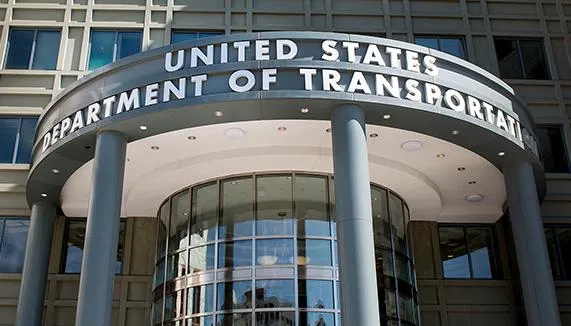The U.S. DOT has a new strategy to cut pollution: promoting green construction materials for transportation projects. Reducing greenhouse gas emissions created during the construction process is a key way to make the country’s transportation systems more environmentally friendly, Federal Highway Administrator Shailen Bhatt told Construction Dive.
“We often talk about the amount of GHG that is produced by our transportation system, but our construction system produces a lot of GHG as well. In fact, almost 10% of GHG worldwide is produced by the construction sector. And so for us to be able to introduce low-carbon materials that perform at the same level as regular materials is a huge opportunity,” Bhatt said.
As part of the DOT’s push to reduce the environmental impact of the transportation sector with low-carbon construction materials, the Federal Highway Administration on Tuesday announced $800 million via the Low Carbon Transportation Materials Program for agencies that carry out transportation activities — not just state DOTs — to reimburse road builders for using products that create less pollution.

Shailen Bhatt
There are a wide range of building products that have lower embodied carbon, such as pavement that uses recycled plastics or an asphalt process that requires lower heating, Bhatt said.
“The benefit of this funding is that [low-carbon] materials often cost more and have challenges getting the supply chain set up. So that’s what this funding is all about, to make sure that state DOTs, cities, towns, [metropolitan planning organizations] and tribes have an opportunity to use low-carbon materials,” Bhatt said.
The program, funded through the Inflation Reduction Act and administered by the FHWA, provides grants to cover the cost difference of using construction materials with substantially lower levels of embodied greenhouse gas emissions than standard products, according to a news release from the FHWA.
Labels for green construction materials
Earlier this month, the EPA announced its plan to implement a new label program to help purchasers identify more climate-friendly construction materials for federal projects. It will define what constitutes “clean” construction materials in support of the Biden administration’s Buy Clean Initiative, a procurement policy that aims to leverage the federal government’s massive purchasing power to grow the market for American-made, lower-carbon building materials.
Materials commonly used for road and bridge projects include asphalt, cement and steel, and Bhatt said the FHWA worked closely with the General Services Administration and the EPA to determine which materials are eligible.
According to the EPA, the label program will offer a tiered rating system, and eligible materials will be listed in a central, publicly accessible registry to make it easier to identify and purchase them. The EPA anticipates that initial products could be labeled by September 2026.
FHWA made $1.2 billion available under this program to state DOTs in March, and now it is opening funding up to other applicants such as cities, metropolitan planning organizations, tribal governments and other federal, state and local agencies that carry out transportation activities, per the release.
DOT aims to push industry
The FHWA’s initiative aims to fight the inertia around changing the materials that builders use, Bhatt said.
“People know what they know, there are concrete plants and other things that are in existence and there are also low margins in this industry,” Bhatt said. “These are some of the reasons why these low-carbon materials have not been adopted as readily, and that’s why the federal funding is there to help show people that these materials work the same, that the longevity is the same, and to help overcome those hurdles so people will deploy them more readily.”
Builders can soon expect more state and local government agencies to put stipulations for low-carbon materials into their RFPs, Bhatt said. The FHWA plans to host a series of webinars in the fall to help contractors get started with these products.
“I think that there’s a huge hunger out there for people to help reduce the carbon footprint, and so we want to provide the materials so that people know exactly what they need to do,” Bhatt said, that way when we “go out and build in the 21st century, we’re not using the same technology materials as we did in the 20th century.”
